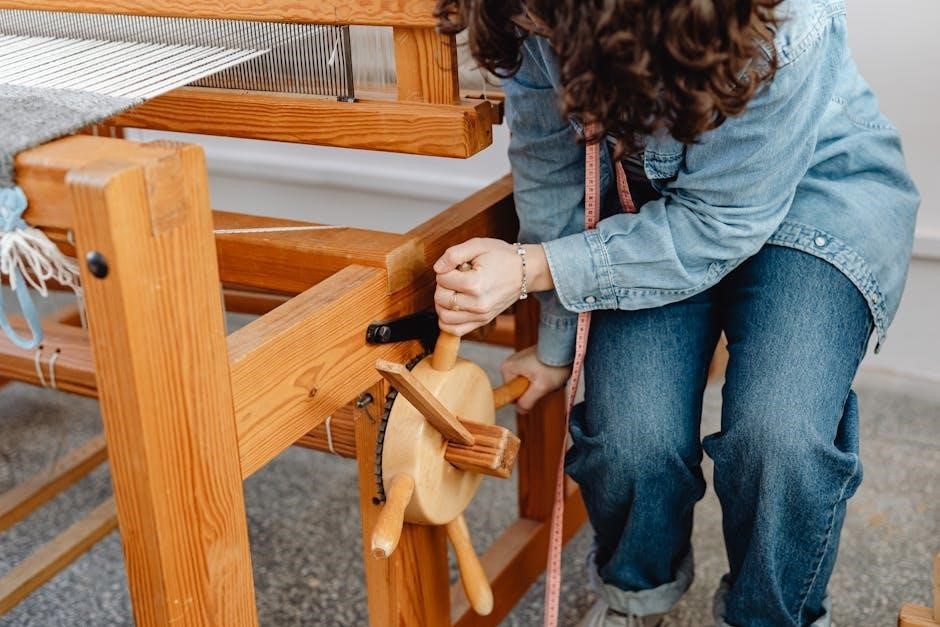Rival Ice Cream Maker Manual: A Comprehensive Guide
Welcome to your comprehensive guide to the Rival Ice Cream Maker! This manual will provide you with everything you need to know to create delicious, homemade ice cream. From understanding the models to essential components, we’ve got you covered. Get ready to embark on a sweet journey!
Rival ice cream makers have been a staple in homes for generations, bringing the joy of homemade frozen desserts to families everywhere; This guide delves into the world of Rival ice cream makers, exploring their history, popularity, and the simple pleasure they bring to creating your own frozen treats. These machines offer a convenient way to create a variety of frozen desserts, from classic vanilla ice cream to adventurous sorbets and yogurts.
With their user-friendly designs and relatively simple operation, Rival ice cream makers provide an accessible entry point for anyone looking to explore the art of homemade ice cream. Whether you’re a seasoned dessert enthusiast or a curious beginner, this guide will walk you through the essentials of using and maintaining your Rival ice cream maker.
We’ll cover everything from initial setup and operation to troubleshooting common issues and finding delicious recipes. By the end of this guide, you’ll be well-equipped to create a wide range of frozen delights that will impress your friends and family. So, get ready to unleash your inner ice cream artist and discover the endless possibilities of your Rival ice cream maker. Let’s get started on this sweet adventure!
Understanding Different Rival Models
Rival has produced a range of ice cream maker models over the years, each with its own unique features and capabilities. Understanding the different models can help you choose the right one for your needs or better utilize the one you already own. Some models utilize a traditional ice-and-salt freezing method, while others feature a gel canister that needs pre-freezing.
The capacity of Rival ice cream makers also varies, from smaller quart-sized models perfect for individual servings or small families, to larger gallon-sized models ideal for gatherings and parties; Electric models automate the churning process, while manual models require hand-cranking, offering a more hands-on approach. Knowing the specific model number of your Rival ice cream maker is crucial for finding the correct manual and replacement parts.
Different models may also have varying power requirements, safety features, and recommended usage guidelines. Take the time to identify your specific model and familiarize yourself with its unique characteristics to ensure optimal performance and longevity. This section will help you navigate the diverse world of Rival ice cream makers and appreciate the nuances of each model.
Essential Components and Their Functions
To effectively operate your Rival ice cream maker, understanding the function of each component is key. The main components typically include the motor unit, the canister, the dasher (or paddle), and the outer bucket. The motor unit is responsible for providing the power to rotate the dasher, which churns the ice cream mixture.
The canister holds the ice cream mixture and is usually made of aluminum or stainless steel for efficient cooling. The dasher is designed to scrape the frozen mixture from the sides of the canister, incorporating air and creating a smooth, creamy texture. The outer bucket holds the ice and salt mixture (in models that use this method), which lowers the temperature of the canister and freezes the ice cream.
Some models also include a lid to prevent splashing and keep the mixture clean during churning. Each component plays a vital role in the ice cream making process. Ensuring that all parts are properly assembled and in good working condition is essential for achieving the desired consistency and preventing malfunctions. Familiarizing yourself with these components will empower you to troubleshoot issues and maintain your ice cream maker effectively.
Initial Setup and Preparation
Before embarking on your ice cream-making adventure with your Rival ice cream maker, a proper initial setup is crucial for optimal performance. Begin by thoroughly cleaning all the components – the canister, dasher, and outer bucket – with warm, soapy water. Rinse well and ensure they are completely dry before proceeding.
Next, familiarize yourself with your specific model’s instructions regarding pre-freezing requirements. Some Rival ice cream makers feature a gel canister that needs to be frozen for a specified duration, often 12-24 hours. Ensure the canister is placed in your freezer in an upright position to allow for even freezing. If your model utilizes ice and rock salt, gather these supplies and keep them readily available.
Prepare your ice cream mixture according to your chosen recipe. It’s essential to chill the mixture thoroughly in the refrigerator for at least a couple of hours, or preferably overnight. This step is vital as it allows the ingredients to meld together and ensures a smoother, creamier final product. Having your ingredients cold before starting the churning process significantly improves the ice cream’s texture and reduces churning time.
Step-by-Step Ice Cream Making Process
Now that your Rival ice cream maker is prepped and your mixture is chilled, let’s dive into the ice cream-making process. Begin by placing the frozen canister (or the ice and salt mixture, depending on your model) into the outer bucket. Ensure it sits securely. Next, insert the dasher into the canister, making sure it’s properly aligned and firmly in place. The dasher is crucial for scraping the sides and incorporating air into the mixture.
Carefully pour your chilled ice cream mixture into the canister, leaving some space at the top to allow for expansion during the freezing process; Overfilling can cause the mixture to overflow. Secure the lid onto the ice cream maker, ensuring it’s properly locked or fastened according to your model’s instructions.
If you have an electric model, plug it in and turn it on. For manual models, begin cranking steadily. The churning process typically takes between 20 to 40 minutes. You’ll notice the mixture thickening as it freezes. Continue churning until the dasher becomes difficult to turn, indicating that the ice cream has reached a soft-serve consistency. At this stage, you can enjoy your freshly made ice cream or transfer it to a freezer-safe container for a firmer texture.
Tips for Achieving Optimal Consistency
Achieving that perfect ice cream consistency with your Rival Ice Cream Maker requires a few key considerations. Firstly, ensure your ice cream mixture is thoroughly chilled before churning. This step is crucial for creating a smooth and creamy texture. Aim for a temperature below 40°F (4°C) for best results. Secondly, the salt-to-ice ratio is vital for manual models. Using the correct proportion ensures the ice cream freezes properly. Refer to your manual for the recommended ratio, typically around 1 part salt to 8 parts ice.
Don’t overfill the canister. Leave enough space for the mixture to expand as it freezes. Overfilling can lead to a grainy texture and a messy cleanup. During the churning process, monitor the consistency closely. Avoid over-churning, as this can result in a hard, icy texture.

If your ice cream is too soft after churning, transfer it to a freezer-safe container and freeze for an additional 1-2 hours to firm it up. For a smoother texture, consider adding a stabilizer like guar gum or cornstarch to your ice cream base. Experiment with small amounts until you achieve your desired consistency. Finally, remember that the type of ingredients you use can also affect the final result. Using high-quality, fresh ingredients will always contribute to a better-tasting and better-textured ice cream.
Adding Ingredients and Customizations
One of the joys of using a Rival Ice Cream Maker is the ability to customize your frozen treats with a variety of ingredients. When adding mix-ins, timing is key to ensure they are evenly distributed and maintain their texture. Generally, it’s best to add chunky ingredients like chocolate chips, nuts, or fruit pieces during the last 5-10 minutes of the churning process. This prevents them from sinking to the bottom or becoming too pulverized.
For liquid flavorings like extracts, liqueurs, or sauces, you can add them earlier in the process, typically after the base mixture has started to thicken slightly. This allows the flavors to meld together more effectively. When adding fruits, consider their water content. Fruits with high water content, like berries, can sometimes make the ice cream icier. To mitigate this, you can roast or sauté the fruits beforehand to reduce their moisture.
Experiment with different flavor combinations to create unique and exciting ice cream varieties. Don’t be afraid to try unexpected pairings like salted caramel with pretzels or lavender honey. Remember to adjust the amount of sugar in your base recipe to compensate for the sweetness of any added ingredients. Always add ingredients sparingly at first, tasting as you go, until you achieve your desired flavor profile. With a little creativity, the possibilities for customization are endless!
Troubleshooting Common Issues
Even with careful preparation, you might encounter some common issues while using your Rival Ice Cream Maker. One frequent problem is the ice cream not freezing properly. This could be due to several factors, such as an insufficient ice-to-salt ratio, a warm ice cream mixture, or a malfunctioning motor. Ensure you’re using the correct amount of ice and salt as specified in your model’s instructions. The ice cream mixture should be thoroughly chilled before churning. If the motor struggles or stops, check that the dasher is properly inserted and that the ice cream mixture isn’t too thick.

Another issue is icy or grainy ice cream. This often results from slow freezing or temperature fluctuations. Make sure the ice cream maker is placed on a level surface and that the ice level is maintained throughout the churning process. Adding a stabilizer like guar gum or cornstarch can also help improve the texture.
If you notice leaks, inspect the canister for cracks or damage. Ensure the lid is securely fastened. If the ice cream is too soft, try churning it for a longer duration or placing it in the freezer for further hardening after churning. Remember to consult your specific Rival model’s manual for detailed troubleshooting tips and solutions. By addressing these common issues systematically, you can ensure a smoother ice cream-making experience and achieve consistently delicious results.
Cleaning and Maintenance

Proper cleaning and maintenance are essential to prolong the life of your Rival Ice Cream Maker and ensure safe, delicious ice cream for years to come. After each use, promptly disassemble all removable parts, including the canister, dasher, and lid. Wash these components with warm, soapy water. Avoid using abrasive cleaners or scouring pads, as they can damage the surfaces. Rinse thoroughly and allow to air dry completely before reassembling.
The outer housing of the ice cream maker can be wiped down with a damp cloth. Never immerse the motor unit in water or any other liquid, as this can cause electrical damage. Check the power cord regularly for any signs of wear or damage, and replace it if necessary.
For models with a freezing canister, ensure it is completely dry before placing it back in the freezer. Store the ice cream maker in a clean, dry place away from extreme temperatures. Periodically inspect the dasher for any cracks or damage, and replace it if needed. Lubricating the motor occasionally, as recommended in your model’s manual, can help maintain its optimal performance. By following these cleaning and maintenance guidelines, you can keep your Rival Ice Cream Maker in excellent condition and enjoy countless batches of homemade ice cream.
Safety Precautions
Your safety is paramount when operating the Rival Ice Cream Maker. Always read and understand all instructions before use. To prevent electrical shock, never immerse the motor base or cord in water or other liquids. Ensure the appliance is unplugged when not in use and before cleaning. Keep the power cord away from heat sources and sharp edges;
Never operate the ice cream maker with a damaged cord or plug. If the appliance malfunctions, discontinue use and consult a qualified technician. Always supervise children when they are using or are near the ice cream maker. Keep fingers, hair, and loose clothing away from moving parts during operation.
Do not overfill the freezing canister, as this can cause the ice cream maker to overflow and potentially damage the motor. Use caution when handling the freezing canister, as it can become extremely cold. Avoid touching the canister with bare hands immediately after removing it from the freezer. Ensure the ice cream maker is placed on a stable surface during operation to prevent it from tipping over. By adhering to these safety precautions, you can enjoy your Rival Ice Cream Maker with peace of mind.
Finding Replacement Parts
Over time, parts of your Rival Ice Cream Maker may need replacement due to wear and tear. Locating the correct replacement parts is crucial for maintaining the optimal performance of your machine. Start by identifying the specific part you need, such as the dasher, canister, motor, or lid. Check your original manual for the part number or a detailed diagram that can help with identification.
Begin your search online by visiting the Rival website, if available, or reputable online retailers that specialize in appliance parts. Use the model number of your ice cream maker to narrow down the search results and ensure compatibility. Consider checking with local appliance repair shops, as they may have access to replacement parts or be able to order them for you.
When ordering online, carefully review the product description and specifications to confirm that the part matches your requirements. Pay attention to customer reviews, as they can provide valuable insights into the quality and fit of the replacement part. Before making a purchase, compare prices from different vendors to ensure you are getting the best deal. With a little research, you can easily find the replacement parts you need to keep your Rival Ice Cream Maker running smoothly.

Exploring Recipes and Variations
Once you’ve mastered the basics of using your Rival Ice Cream Maker, the real fun begins: exploring a world of delicious recipes and exciting variations! The possibilities are truly endless, limited only by your imagination and taste preferences. Start with classic flavors like vanilla, chocolate, and strawberry, using the recipes included in your manual or found online.
But don’t stop there! Experiment with different ingredients and flavor combinations to create your own signature ice cream creations. Consider adding fresh fruits, chopped nuts, chocolate chips, or cookie pieces for added texture and flavor. For a richer, more decadent treat, try using heavy cream or incorporating ingredients like caramel sauce or fudge swirls.
Get creative with unique flavor profiles, such as mint chocolate chip, cookies and cream, or coffee caramel. Don’t be afraid to venture beyond traditional ice cream flavors and explore options like sorbet, gelato, or frozen yogurt. Look for inspiration in cookbooks, food blogs, or online recipe databases. Remember to adjust the recipe to suit your taste and the capacity of your Rival Ice Cream Maker. With a little experimentation, you’ll discover a treasure trove of frozen delights that will impress your family and friends.
